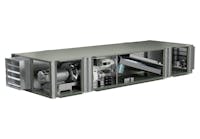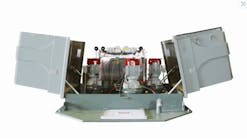My firm worked in conjunction with an architect on an engineering design for an area library. The project had a well with a large pressurized tank that provided water. Although we specified an American Society of Mechanical Engineers-coded tank, the plumbing contractor submitted cut sheets that featured a non-coded tank for approval. I rejected it, calling for a coded tank.
The tank arrived and was installed, and the building was built around it. Although my preliminary punch list noted that the tank should be cleaned, it came in dirty and mud-spattered. Then the insurance inspector showed up.
“Where is the code stamp?” he asked.
I immediately called the contractor. The unit we had received was not a coded tank. The inspector told us to have a state inspector review the tank and that if it made muster, he would approve it. The state inspector initially approved the tank for 29 lb. This was insufficient. We requested data from the manufacturer, who eventually stonewalled us. Finally, we told the plumbing contractor to cut up the unit and erect a code-approved tank in its place.
A pump-company sales representative came along with a solution: The tank was vented to be a storage tank, and a smaller pressurized unit with a compressor was tied in to handle the needed pressure. This made everybody happy, including the plumbing contractor, because this solution would cost only about $4,500 instead of the thousands more he would have had to spend.
We then received two complaints from the owner. The first was that hot water was coming out of a cold-water faucet. I went to the site and was taken to an area that did not have plumbing on our plans. Someone had put in a sink. I inspected above the ceiling and found that the installer had butted the hot- and cold-water lines together without any insulation between them. I told the people at the site how to fix it.
A short while later, I got a call complaining about the water pressure. When I got to the site, I was taken to another building that was down the hill from the previous problem. They had tapped into the now-non-pressurized line at the previous building illegally and run it down the hill to this building. I explained to them what they did and left them to their own devices.
Albert R. Pressler, PE
J.A.R. Engineering Inc.
Flemington, N.J.








